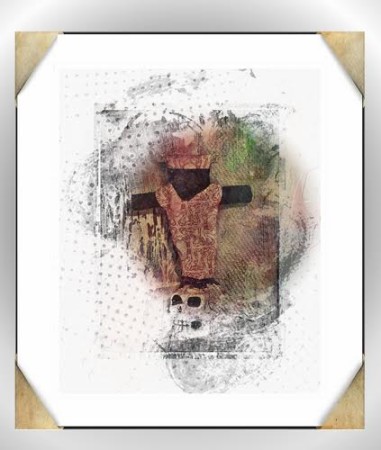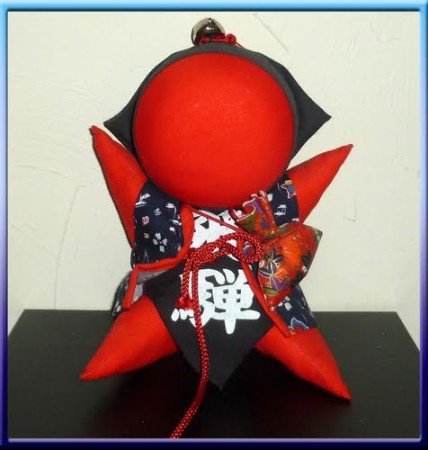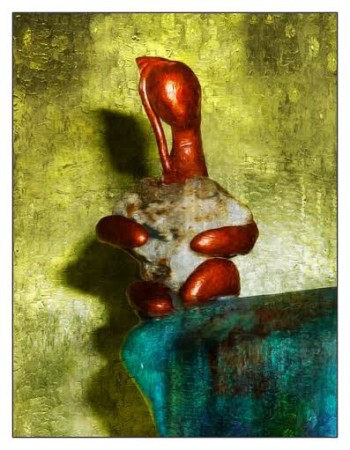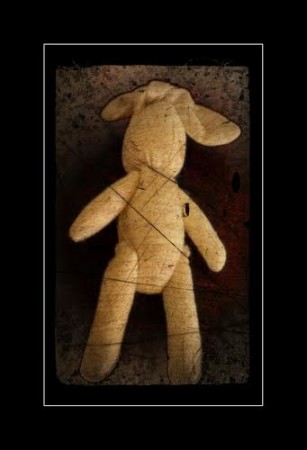
Faceless
-By Debbi Decker
There sits on a shelf a doll with no face. All in red, round head and star shaped body. No gender implied. It is called a Sarubobo, and it comes from Takayama in the Gifa prefecture, located in the mountainous Hida region of Japan. Legend says grandmothers of long ago would have made this doll for a grandchild in various colors, with red bringing luck in marriage, fertility, and childbirth. That fact that the doll is faceless also allowed the possessor to project whatever image they wished upon the doll, such as the face of a mother, father, or even themselves.

Here in the United States, the Amish traditionally created faceless dolls based upon Christian biblical teachings that forbid people from creating and/or worshipping graven images or idols. A faceless doll would not allow the children to see it as a human likeness, and therefore they avoided the sin of loving or “worshipping” an idol. The faceless dolls of the Amish also kept a child from identifying with a beautifully-rendered doll and so guarded against the sin of vanity. In my research I found Islam also forbids the depiction of facial features of any kind, including those on dolls.
Still another example of a faceless doll would be the corn husk dolls of the Iroquois, a Native American confederacy. Traditionally, the women would plant and tend the corn, which would then be harvested and the husks saved to make rugs, masks, medicine bundles, and dolls that had no faces. Their reasons for the lack of faces runs the gamut from religious and medicinal purposes to teaching life lessons to the children. There is a creation story told by the Iroquois that tells us that the first corn husk doll had a beautiful face. She was put on the earth to take care of and to guide the children. When she caught her reflection in the waters of a stream, she became so enamored of her beauty that she continually stared into the stream and thus neglected the children. The Creator then took away her face to punish her for her vanity.
Sarubobos are made in other colors for love, health, money, and removal of bad luck. Corn husk dolls have been found in Iroquois medicine bags, and it was also believed by the People that to give a doll a face was to give it a soul. Waldorf dolls, another faceless variety, are used as educational tools for invoking imagination and fantasy. A Voodoo doll in times past would have been made without a face at the start, and only given one as the spell work upon the doll progressed, and only if necessary to increase the spell’s success. As an aside, Voodoo dolls actually came from Europe and were not an original part of the religious practices brought over with from Africa. The European poppet was a doll used in fertility rites and other magical working, and some were buried in the crop fields to insure a good harvest.

Dolls trigger all kinds of emotions and feelings. Many do not like them and avoid them, while others collect them and fill their homes with them. Then there are those like me who find the faceless dolls intriguing and useful. The thread that ties together the aforementioned dolls is the use of imagination to project images and feelings upon the dolls. Which is an important part of all magical workings. The components and tools that we use in our spiritual practices are, as a rule, imbued with our thoughts and feelings, and certain outcomes are projected upon the components as a whole. I will, however, rarely buy any kind of used doll at a flea market, collectible or antique store, as I have no way of knowing who had that doll before me and what that doll meant to any previous owner.
My Sarubobo was given to me by someone who knew I would be appreciative of the magical purpose for the doll, but who clearly did not realize the correlation of the color. At the time of the gift, I had already married, birthed children, and divorced, and I was well beyond the desire to ever remarry or have any more children! Therefore, the doll sits on the shelf, is rarely handled, and, in my mind, remains faceless. After all, I am keenly aware that to handle dolls is to imbue qualities upon them and to awaken the magic they hold. And I am afraid that should an aspiring husband show up on my doorstep I will be forced to bring out that other faceless doll of ill repute and begin a working with some pins.

Photographs “Sarubobo”, “Faceless Goddess”, “Faceless Poppet and “Voodoo Doll” provided by Crazed Poppet Creations and are copyrighted images. To contact Debbi Decker for purchase of these prints visit her website.
Debbi Decker is proprietor of Crazed Poppet Creations Art & Assemblage Emporium. Check out her artist page to find links to her shop and blog to read more of her writings. Visit again next month for the telling of hauntings and ghostly tales by Debbi Decker.
